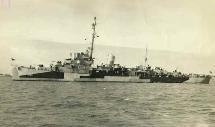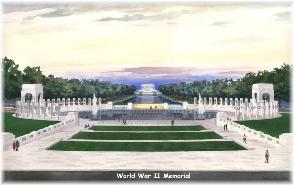|
|
 |
|
|
 |
|
|
|
|
|
 |
|
|
|
|
|
 |
|
|
|
|
|
USS Haverfield DE-393; Prior To 1954
|
|
|
|
|
|
|
|
 |
|
|
|
 |
|
|
|
If you get the opportunity, visit the
World War II Memorial in Washington
DC. The dedication will be Memorial
Day, 2004.
|
|
|
|
Next
|
|
|
Previous
|
|
|
|
|
Home
|
|
|
|
|
|
|
|
|
|
|
|
|
|
|
|
|
|
|
|
|
|
|
|
|
|
|
|
|
HAVERFIELD James Wallace Haverfield was born 11 April 1917 in Urichsville,
Ohio. After receiving his B.A. from Ohio State University in 1939,
Haverfield enlisted in the Naval Reserve as an apprentice seaman 11
September 1940. He accepted an appointment as a midshipman 16 March 1941
and, after completing his training at Northwestern University, was
commissioned Ensign, 12 June 1941. Ensign Haverfield reported to the
battleship ARIZONA (BB-39) at Pearl Harbor 28 June, and remained there.
During the Japanese attack on Pearl Harbor 7 December 1941, Ensign James
Haverfield was one of 46 officers and 1,057 men of ARIZONA lost when the
enemy sank the valiant ship.
DE-393 Displacement: 1,200 t. Length: 306’ Beam: 36’7â€� Draft: 8â
€™7â€� Speed: 21
k. Complement: 186 Armament: 3 3�; 2 40mm; 8 20mm; 3 21� torpedo
tubes; 2
depth charge tracks; 8 hedge charge projectors; 1 hedge hog Class: EDSALL
HAVERFIELD (DE-393) was launched 30 August 1943 by Brown
Shipbuilding Co.,
Houston; sponsored by Mrs. Tracy Haverfield, mother of Ensign Haverfield;
and commissioned 29 November, Lt. Comdr. Jerry A. Matthews in command.
After shakedown in the Caribbean, HAVERFIELD joined escort carrier
BOGUE’s
(CVE-9) hunter-killer group in patrolling Atlantic convoy lanes in search of
marauding German U-boats. Departing Norfolk 26 February 1944, the
hunter-killer group, aided by a Canadian corvette and British aircraft, sank
U-575 on the 23rd of March. With some seven survivors of the Nazi submarine
aboard, HAVERFIELD continued her patrol to Casablanca, where she reported
to
Commander, Moroccan Sea Frontier, and turned over the German prisoners 18
March
After returning to Norfolk, HAVERFIELD sailed on her second offensive
combat
cruise with the BOGUE group 5 May. Operating with another HUK group under
escort carrier BLOCK ISLAND (CVE-21), the BOGUE force sank RO-501,
ex-U-1224, at 18d 08m N., 33d 13m W., 13 May as the former German ship
was
heading for her new home in Japan. Reaching Casablanca 29 May,
HAVERFIELD
was ordered out that same night to render emergency assistance to survivors
of escort carrier BLOCK ISLAND, sunk by a German torpedo off the Canary
Islands. HAVERFIELD rescued one of six BLOCK ISLAND fighter pilots who
had
been aloft when the carrier sank, but a long search failed to locate the
remaining five men. After this, HAVERFIELD continued to operate until the
European War ended in May 1945 on trans-Atlantic HUK missions as well as on
patrol along the icy Great Barrier.
When all German U-boats still at sea had been accounted for, the
destroyer escort underwent a Boston overhaul; and, after intensive training
in Cuban waters, sailed for the Pacific 19 July to be ready for the invasion
of Japan. Reaching Pearl Harbor via the Panama Canal and San Diego 1 August,
HAVERFIELD was there when the war ended in mid-August and at the end of
the
month assumed convoy escort duty from Saipan to Okinawa. She patrolled the
China coast and then streamed her homeward-bound pennant, reaching Boston
15
February 1946. HAVERFIELD sailed to Green Cove Springs, Fla., 25 March
1946,
decommissioned and went into reserve 30 June 1947.
USS Haverfield DE-393 during World War II







